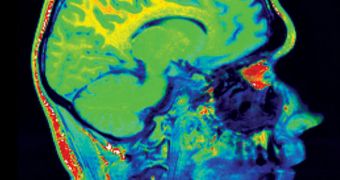A recent study conducted on the human brain revealed that empathy is not produced in a single area of the brain. Rather, multiple areas interact in intricate patterns in order to underly this human ability.
Empathy is what allows us to put ourselves in another person's shoes, to relate to what they are feeling, and to try to think of a solution as if we were in their place. For many years, researchers have been looking for the source of empathy.
But the latest study conducted in this area is revealing that there is no single source for this emotion. The team behind the work learned that both the intuitive, sensory-motor parts and the rational parts of the brain are involved in generating this feeling.
The former apparently activates when we witness people going through something we've also gone through, whereas the latter comes into play when the person we are seeing is passing through an experience we did not, or cannot, yet feel.
University of Southern California (USC) investigators say that the brain is capable of producing these forms of empathy even in patients who are missing a limb. When exposed to videos of others getting hurt in a limb that the observers don't have, their brains still light up.
In order to obtain the most relevant result out of this research, the team decided to use functional Magnetic Resonance Imaging (fMRI), a medical imaging technique that reveals how blood flows through the brain. The method also shows which ares of the brain activate under specific conditions.
During the experiments, 13 healthy volunteers and people who had been born without either arms or legs were shown videos of tasks being performed using arms, legs and mouth, while their brains were hooked up to the fMRI machine.
In a paper published in the latest online issue of the esteemed journal Cerebral Cortex, team leader Lisa Aziz-Zadeh reports that the sensation of empathy appeared in all test subjects. “People do it automatically,” the investigator explains.
She holds an appointment as an assistant professor at the USC Division of Occupational Science and Occupational Therapy, PsychCentral reports. The expert says that the circumstances dictate which areas of the brain activate more.
But what was made clear in the research is that both the rationalizing and the intuitive areas of the brain lit up during the experiments. In other words, they work in tandem to produce empathy in spectators.

 14 DAY TRIAL //
14 DAY TRIAL //